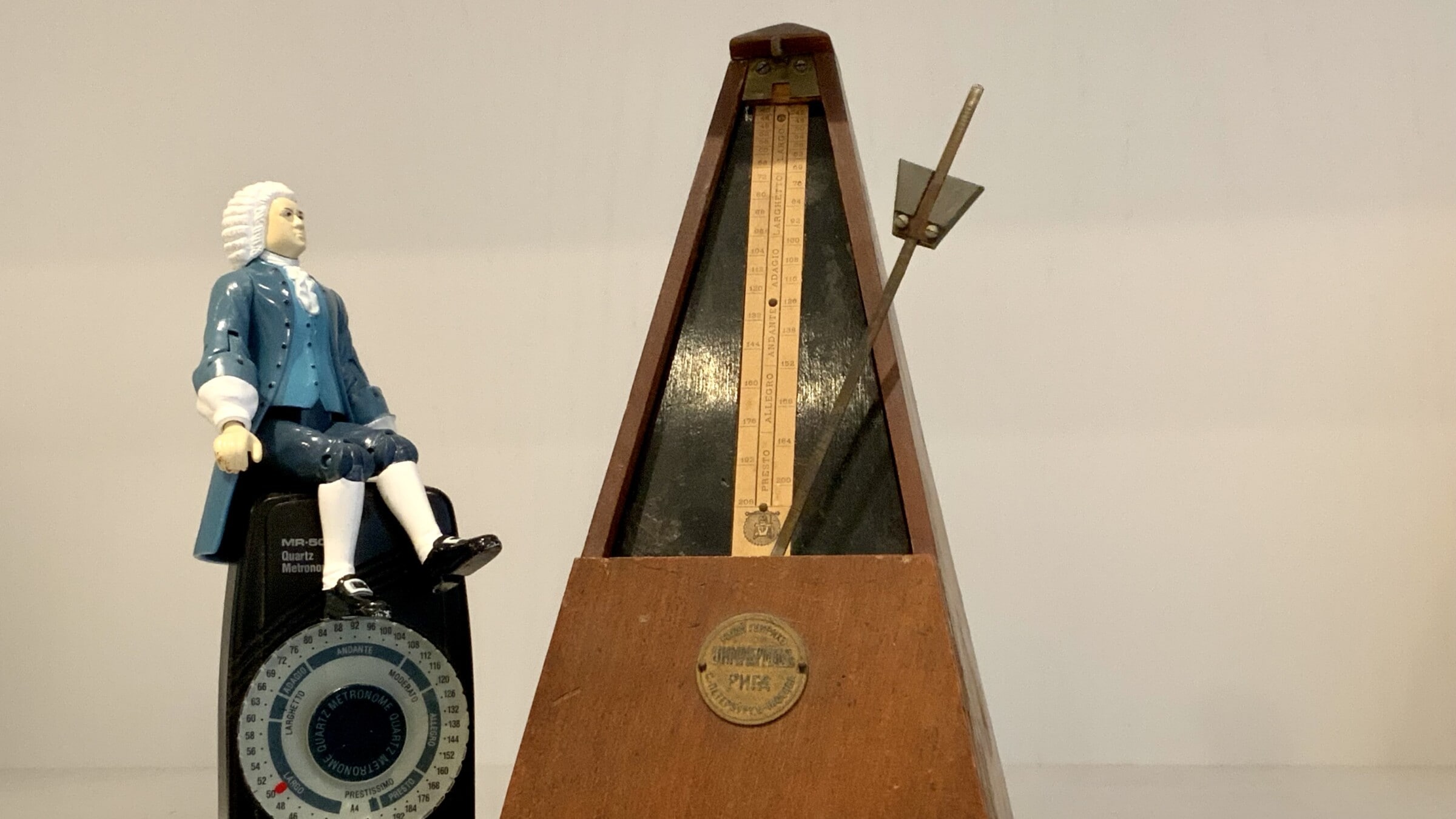Back in the days of full-time teaching, my stock phrase “The Metronome Is Your Friend,” delivered brightly and somewhat theatrically, was infallibly met with a halfhearted, wary smile. I don’t know why that helpful little tool caused such apprehension in piano students of all ages. Perhaps if its name sounded more like TikTok it would catch on faster: the combination of “METRO” and vaguely evil (G)NOME could have been unsettling. Should I have used a Hello Kitty model? (I just checked and apparently those exist.) At any rate, all my students eventually overcame their misgivings and learned to match the ticking by creating their own internal rhythm. If not a beautiful friendship, at least a relationship was formed.
I have no memory of using the metronome as a child but I certainly did and I still own my broken old one, bearing the name of the European city where I was born. My husband also kept his metronome, a similar-looking wooden pyramid, but his has a lighter-colored case and still works. They now stand side-by-side on my shelf, a testament to times gone by.
The metronome I currently use is the same quartz one I showed to my students, a small black plastic box with a dial. I like it because it’s portable, the numbers are clear, the dial is easily set and there is a blinking light option. Among the different buying options, it’s the type I would recommend. (Available here on Amazon)
In the video below, I describe the ways we can implement the metronome. I hope that it will be helpful to those of you who asked about this topic. As always, if you have any comments or know of any cool new metronomes out there, let me know. I didn’t mention digital metronomes built into keyboards because most of us have pianos and anyway I prefer the quartz or mechanical versions to the electronic ones.
Happy Practicing!
